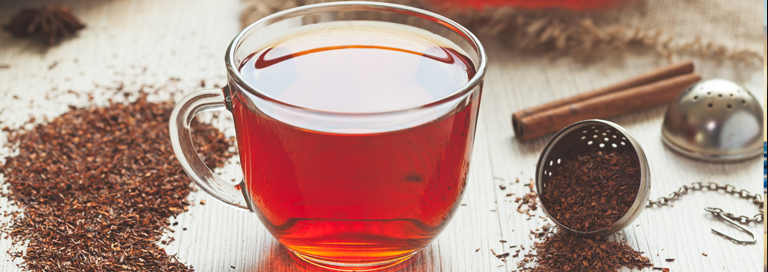The “experts” who refuse to endorse the key role telomerase and telomere length play in your health and longevity are robbing you of vital knowledge that could save your life.
If you’re a regular reader, you know telomeres are the caps protecting the ends of your DNA strands. Like a biological count-down, they grow shorter with each replication.
Telomere length instructs your cells to look and behave in a particular way. Long telomeres produce cells that are young and healthy. Short telomeres accelerate aging and degrade the quality and potential of your cells.
Now, new evidence has emerged that shorter telomeres contribute to the chronic kidney disease now affecting 37 million Americans.1
Short Telomeres = Vulnerable Kidneys
Researchers at the Spanish National Cancer Research Center in Madrid, Spain subjected mice with normal telomeres and mice with very short telomeres to the same toxins.
The mice with normal telomeres showed no signs of kidney damage whatsoever. They were fine.
But kidneys in the mice with short telomeres were wrecked. They had significant scarring and high levels of creatinine and urea.
Along with other studies done on humans, it’s further proof of the importance of protecting your telomeres. And the good news is, we have the ability to influence the length of these tiny genetic clocks. Here’s how to do it.
Your 4-Step Telomere Growth Plan
Step 1 – Put your telomeres to the test. A simple test can determine your telomere health, but most doctors fail to recommend it.
I recommend Life Length in Bensalem, PA. You can sign up for a test online and don’t need a prescription. Their analysis will tell you how many critically short telomeres you have, and reducing that number is how you measure your progress.
Step 2 – Feed your telomeres. Nicotinamide adenine dinucleotide (NAD
+) is a coenzyme that activates sirtuins. Those are the proteins that direct telomerase enzymes to rebuild your telomeres.It’s no accident that most patients with dysfunctional telomeres have low NAD+. Unfortunately, NAD+ levels drop sharply as you age.
There are ways to reverse this. Eating vitamin-B rich foods helps. I’m talking about grass-fed beef, organ meats, pastured eggs, spinach, and wild-caught salmon. I also recommend adding a B3 supplement, either niacin or nicotinamide riboside. To avoid feeling flushed, I suggest you start slowly and work up to 750 to 2000 mg a day.
Step 3 – Enlist free-radical fighters. One proven strategy is to get more ascorbic acid, better known as vitamin C. At the right dose, it increases telomere length 62 percent.2 But be forewarned, the standard vitamin C supplements are not well absorbed. You’d be lucky to absorb more than 500 mg in a single day.
That’s why I recommend a liposomal-encapsulated ascorbic acid supplement. Wrapping the vitamin C in a tiny, fatty bubble more than doubles its absorption.3 This delivery secret enables you to take very large doses of vitamin C every day. I recommend 5,000 to 8,000 mg daily. It’s best taken in several smaller doses throughout the day.
Step 4 – Go Red with Rooibos. Your body’s most powerful antioxidant enzyme is superoxide dismutase (SOD). Boosting SOD is like putting your telomeres in a suit of armor.4
One of the best SOD boosters is Rooibos tea. It’s an ancient, caffeine-free South African herbal remedy that increases SOD activity.5,6
It has a woody flavor with just a hint of vanilla that’s delicious!
To Your Good Health,
![]()
Al Sears, MD, CNS
References:
1. Chronic Kidney Disease in the United States, 2021. Centers for Disease Control and Prevention fact sheet, March 2021.
2. Furumoto, K., Nobuhiko, M., et al (1998) Age-dependent telomere shortening is slowed down by enrichment of intracellular vitamin C via suppression of oxidative stress. The Journal of Life Sciences.
3. Furumoto, K., Nobuhiko, M., et al (1998) Age-dependent telomere shortening is slowed down by enrichment of intracellular vitamin C via suppression of oxidative stress. The Journal of Life Sciences.
4. Serra, Violeta & Zglinicki, Thomas & Lorenz, Mario & Saretzki, Gabriele. (2003). Extracellular Superoxide Dismutase Is a Major Antioxidant in Human Fibroblasts and Slows Telomere Shortening. The Journal of biological chemistry. 278. 6824-30. 10.1074/jbc.M207939200.
5. Waisundara, V., & Hoon, L. Y. (2015). Free radical scavenging ability of Aspalathus linearis in two in vitro models of diabetes and cancer. Journal of Traditional and Complementary Medicine, 5(3), 174–178.
6. Hong, I.-S., Lee, H.-Y., & Kim, H.-P. (2014). Anti-Oxidative Effects of Rooibos Tea (Aspalathus linearis) on Immobilization-Induced Oxidative Stress in Rat Brain. PLoS ONE, 9(1), e87061.

